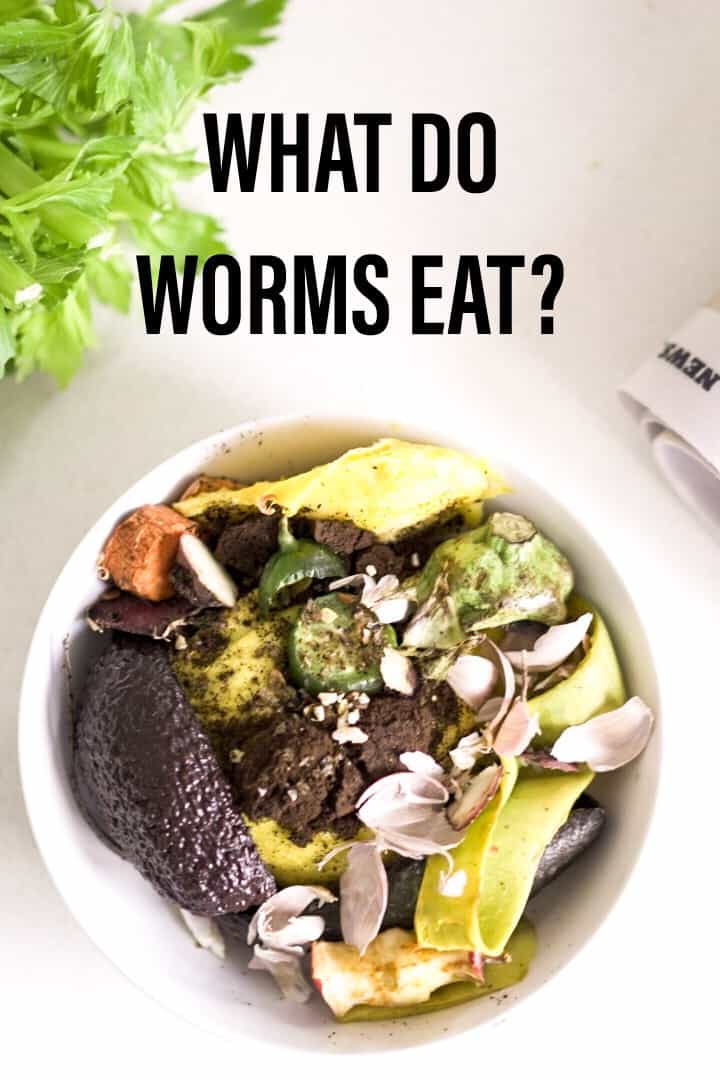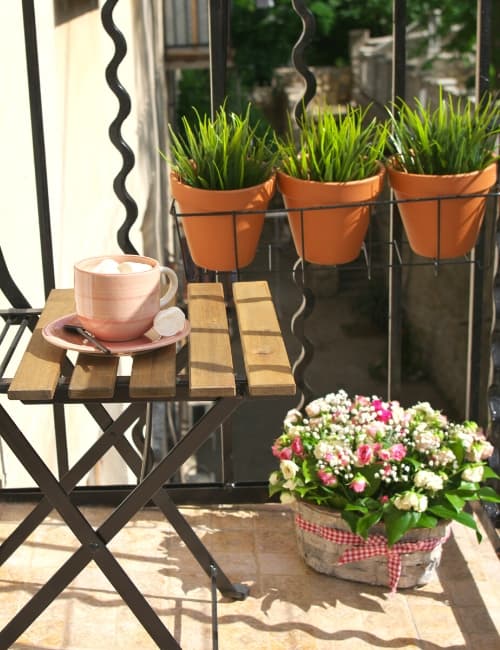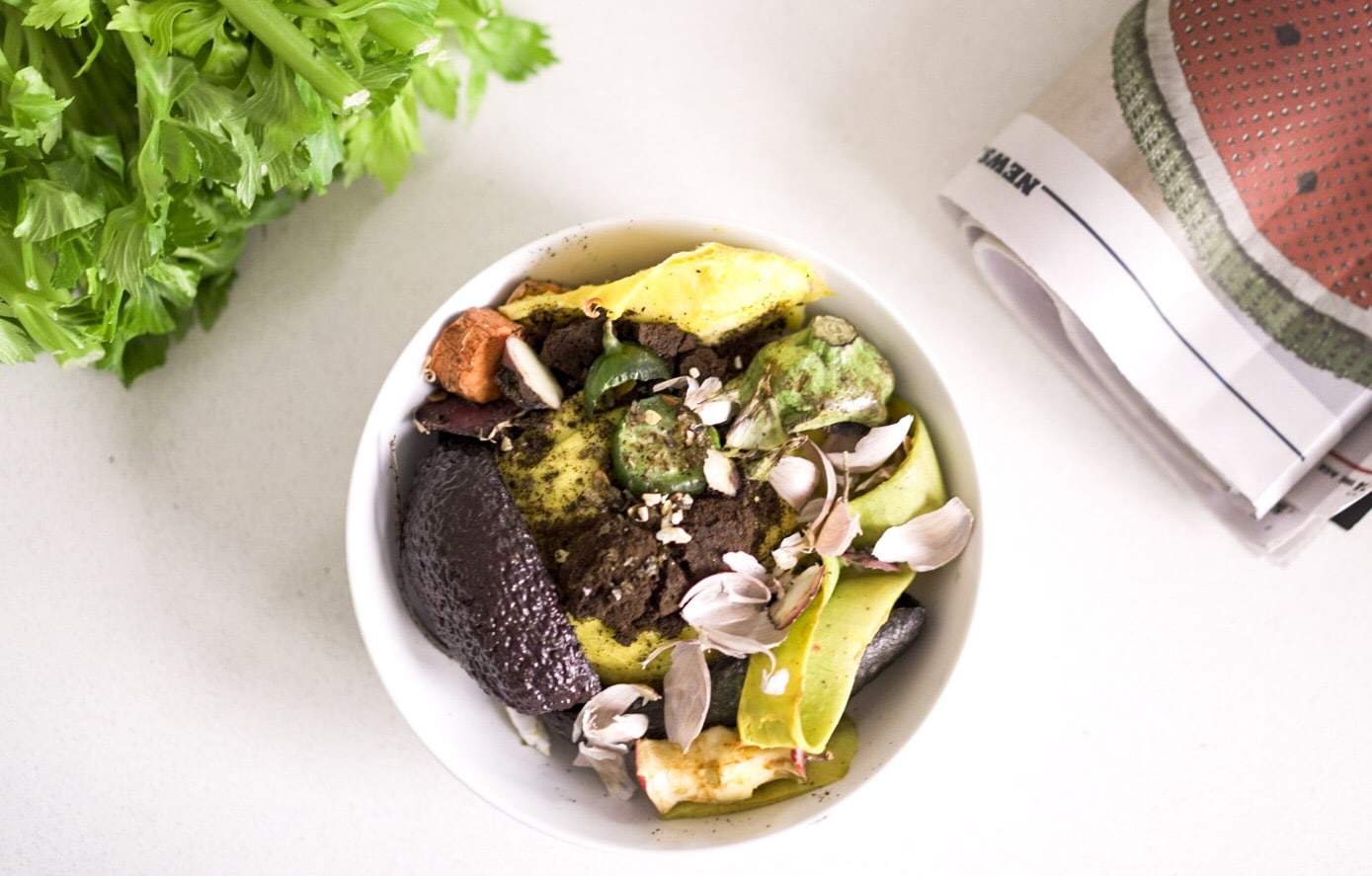
What Do Worms Eat? (More Like – What Don’t Worms Eat?!)
Composting is a great way to level-up your sustainability game.
Vermicomposting, though, is yet another leap forward in learning how to reduce your carbon footprint at home.
And first up, we’re going to talk about a pretty important question: what do worms eat?
Remember >50+% of municipal solid waste generated is compostable material, which means worms will actually eat most of what you throw away.
You can think of it as chomposting…Nothing says “natural” more than turning your trash into a tasty treat for another living creature.
Not only that, but the vermicomposting process yields yet another useful byproduct that you can use to fertilize your plants – worm tea.
Generally, there are many benefits of composting and many fascinating composting facts worth reading about.
With worms though, we can super-charge our sustainability efforts and drastically reduce waste. So let’s wriggle right in to what kinds of waste these worms can eat.
QUICKLINKS FOR What Worms EAT
WHICH WORMS ARE WE TALKING ABOUT?
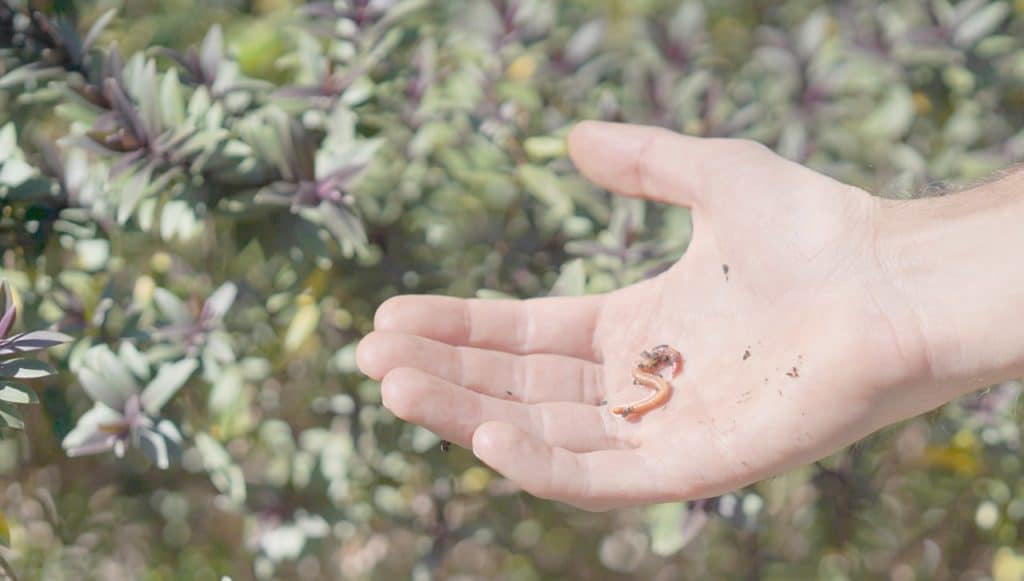
Before we hand out menus, let’s meet our dinner guests.
When we think of earthworms, we tend to conjure up one image but when it comes to composting, there’s actually a variety to consider each with their own strengths and weaknesses:
Red wigglers:
These heroes of vermicomposting are hands-down the favorite because they’re efficient and easy to keep. These small worms are surface dwelling, or epigeic, and cluster in upper layers of organic matter.
Since Red Wrigglers naturally eat manure and fallen leaves, they’re exceptionally suited to composting much larger scraps of organic matter, just like you’ll be feeding them.
Redworms:
Like red wigglers, redworms are also a top choice for vermicomposting.
The only trouble with redworms is they are incredibly difficult to identify, so it’s nearly impossible to find them yourself. Best to order from a local supplier or online to get the right worms.
Nightcrawlers:
If you’re an avid fisherman, you might be familiar with these “bait worms”.
Nightcrawlers are much larger than red wigglers, growing 8-10” long and up to 0.5” in diameter, and are anecic, meaning they burrow deep down into the soil.
This makes them great for aeration purposes in your yard, but less effective composters.
Many worm famers will still raise nightcrawlers specifically to sell them to fishing supply stores. Turn your trash into a small business!
Superworms:
Sometimes called “kingworms”, these worms are not typically used for composting, but rather for feeding pet reptiles. Find them at any pet store.
Superworms are actually the larvae of a beetle, and technically classified as a mealworm, though are much larger than standard mealworms and can stay in their larvae stage (important if you plan to use them for composting) for up to a year.
Even though these worms aren’t go-to composters, that could all change since a Stanford University study found superworms capable of digesting and breaking down even Styrofoam!
PS: Polystyrene is highly resistant biodegradation and is not compostable by traditional methods, so the possibility of finding a worm that’ll safely eat and purify this stuff is pretty amazing!
Who says, you have to pick just one?
You can actually mix types of worms in the same bin to tackle waste at every level. Let nightcrawlers take care of your lower soil layers, making some nice rich humus, and let red wigglers chow on the top!
Just keep superworms out of the mix.
For more on worm differences, you can watch this worm farmer’s video.
WHAT TO FEED YOUR WORMS
Well, worms, like people, need a balanced diet consisting of green and brown matter:
- Green matter: High in nitrogen (the protein of the worm world) and consists of kitchen and yard scraps, like fruits, vegetables, and leaves. Greens are essential in helping your worms breed and grow.
- Brown matter: High in carbon (the carbohydrate of the worm world) and consists of things like paper. These provide worms with energy, absorb odors, and help in faster formulation of humus, an important composting byproduct.
Specific things you can feed your worms:
Eggshells: These provide calcium with promotes overall bin health, act as “grit” with which to break down other food, and balances the bin’s pH levels.
Paper products: Carbon-rich materials like paper that make the perfect “bedding” material for your worm farm.
Newspapers, egg cartons, cardboard boxes, letters sent by that credit card company that just can’t take the hint: your worms can never have too much paper.
Just make sure you shred it and soak it in water before adding.
Cotton scraps: If you have old eco friendly towels (preferably organic towels), rags, or pieces of cotton clothing (make sure it’s 100%), your worms can eat it.
Fruits & vegetables: You know all the parts to thing we tend not to like: potato skins, banana peels, apple cores? Worms love ’em, as long as they’re organic (and do not contain any pesticides that could kill the worms).
Just be aware of how much fruit you’re adding. High sugar content will elevate the pH of the bin and might require you to rebalance the levels.
Moldy bread: You know that loaf of bread you forgot about? No shame, we’ve all been there, but thankfully, your worms will make sure that moldy bread doesn’t go to waste. Just grind it up and feed your worms.
Be mindful of the amount of grains you add, because they can harden before your worms can eat them. Plus, bread attracts unwanted pests and rodents.
Coffee grounds & tea bags: Make Earl Grey tea and worm tea in one fell swoop!
Manure: In regular composting, you shouldn’t use any sort of fecal matter for fear of growing harmful bacteria. Worms, however, love it!
Horse and cow manure is their natural diet and they are able to safely digest and eliminate any bad bacteria and pathogens.
Leaves
Hair and nail clippings: It may not sound appetizing for us, but worms will gladly make a meal out of your dead skin. As if we weren’t already impressed.
WHAT NOT TO FEED YOUR WORMS
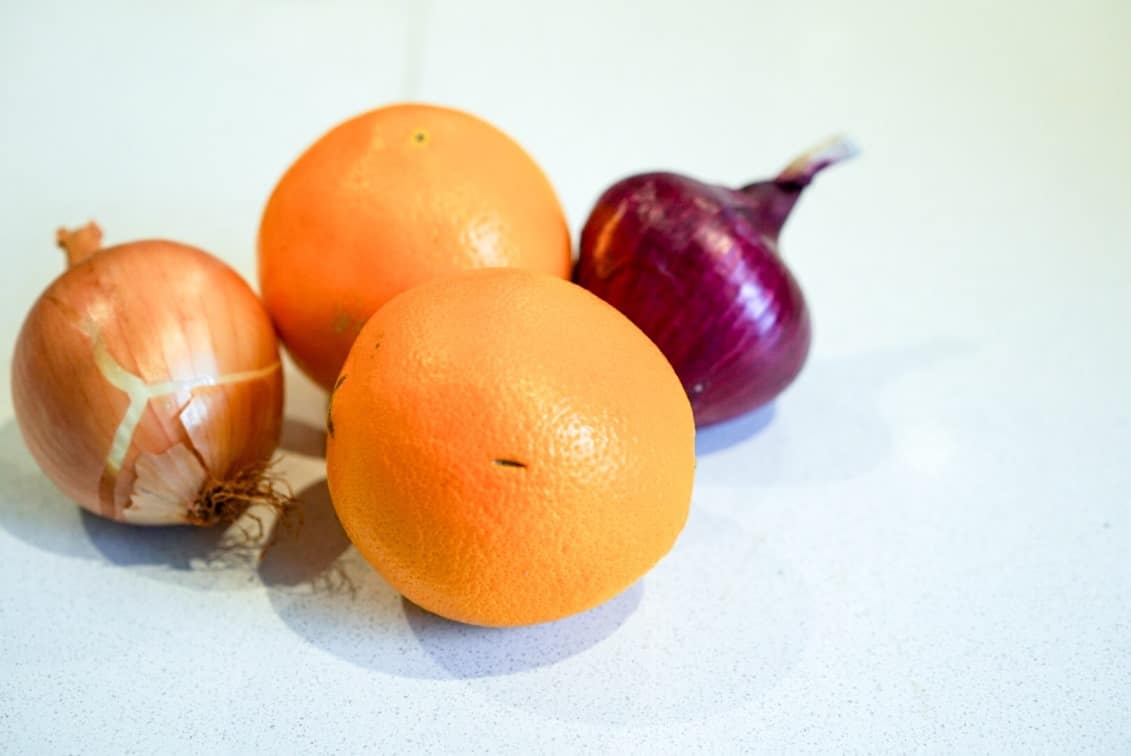
So what’s not compostable? Or rather what can’t our little wrigglers eat?
Worms are pretty non-fussy eaters, but just like the rest of us, they have their limitations. Here are a few items these little guys will feel a little less enthused about:
Processed foods with lots of preservatives: These aren’t good for us, and they’re not good for worms either.
Citrus: Worms eat most fruit scraps, but stay away from citrus and anything high in acidity. This includes tomatoes, oranges (including the peel), limes, lemons, onions (though onion skin is okay), pineapple, and papaya.
Not only are acidic things toxic to worms, but they throw your pH out of wack and slow down decomposition.
Onions and garlic: Too acidic for our wormies and a little too smelly!
Meat and bones: Worms can consume these, but the smell of rotting meat will also attract lots of unwanted pests. If you have an outside composter then this may be no problem!
Oil: Worms breathe through their skin, and a coat of oil prevents them from breathing. Natural oils, such as that of avocados and nuts, are the exception.
Spicy or salty foods: Again, because worms breathe through their skin, it’s important not to add any potential irritants like these, which can actually burn worm skin.
Dairy: This is less for the worm’s sake and more for yours. Dairy smells when it’s breaking down. But again, if you’ve got an outside composter, by all means…
Dry grains: As mentioned above, grains like bread can be added in moderation, but dehydrated grains like pasta or rice will produce too much heat in your worm bin, raising it to dangerously high temperatures.
Poisonous plants: It may seem like a no-brainer to avoid poison oak or ivy, but plenty of other plants are secretly toxic. Rhubarb, for instance, produces deliciously edible stalks, but its leaves are poisonous.
This goes for any insecticides you may have sprayed on your plants as well. Make sure know exactly what’s in your garden before it goes in your worm bin.
Grass: Strange, we know, but as grass decomposes it does two things: 1) It raises the temperature of your worm bin, and 2) Emits ammonia. Both are a bad mix for our wiggly friends.
Color inked/glossy paper
Non-biodegradable items: This should be obvious but make sure you don’t give worms soap, plastic, glass, metal, or other non-organic items.
LET’S TALK ABOUT HOW TO FEED YOUR WORMS
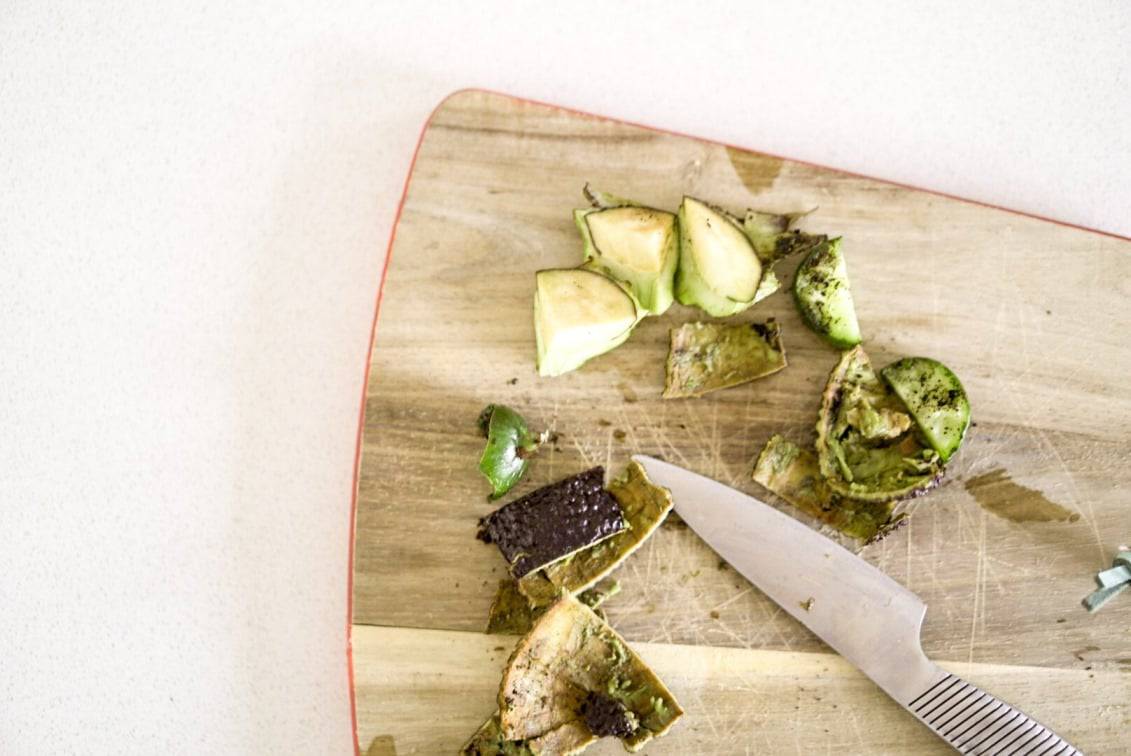
Feeding worms is actually a very simple process with simple steps:
1. Prepare scraps for optimal worm consumption
Despite how efficient these guys are at chowing down, they actually don’t have any teeth, so they can’t eat anything until it starts to decompose.
Breaking down your scraps (by shredding, pureeing, freezing, or even microwaving) prior to feeding helps expedite the process.
You also want scraps to be at room temperature when feeding and that food scraps aren’t too far gone to feed your worms. Since worms like things best beginning to decompose, don’t give them anything too rotten or it’ll just stink up your bin.
2. Place the proper amount of food in the top of the bin
How much should you be feeding them? It depends on how many worms you have.
For a brand new bin, your worms will take a couple weeks to mature and reach max consumption. Once that happens, they can eat up to half their body weight in a day. Seriously impressive!
For some perceptive, 1000 red wigglers (the recommended amount to start vermicomposting) weigh about 1 pound, needing one half-pound of food each day.
You don’t’ necessarily need to weigh your worms or their food. Worms will tell you when they need more. When their last meal is nearly gone, it’s time to feed them again, simple as that.
If you feed them too much, the food will only rot, which can actually cause “protein poisoning”, in which your worms will start to look sickly and discolored.
**Remember, it’s better to underfeed your worms than it is to overfeed them.**
Some worm farmers prevent this by “pocket feeding” or adding smaller amounts of food to rotating sections each day or two.
If the health of your bin is optimal, the worm population can double every 60-90 days, meaning you’ll need to account for that gradual increase in amount of food.
Remember that talk of green and brown organic matter?
It’s important to make sure you are feeding your worms a balanced amount to maintain a healthy carbon to nitrogen (C:N) ratio, which dictates rate of decomposition and thus rate of worm consumption.
A successful vermicomposter should see a C:N ratio between 20:1 and 35:1. A 30:1 ratio is key; brown carbon rich materials are greater and green nitrogen rich materials are lower.
That’s a lot of fancy number talk for a simple rule of thumb: strive for equal parts green and brown and your C:N ratio will be fine.
3. Cover the food with “bedding”
Shredded paper works great. This maintains moisture and encourages your worm to come to the surface.
Otherwise, they’ll stick toward the bottom of the bin, where it’s darkest and coolest.
4. Maintain the health of your worm bin by monitoring it occasionally between feedings
Be on the lookout for potential problems that might be forming:
Moisture:
You don’t want your bin to be either too moist or too dry.
A dry bin is easily fixed by adding water. An overly wet bin, however, must be remedied by adding dry, carbon rich materials to absorb the water. Keep these ratios in mind when feeding.
If you’ve added a lot of watery food, like lettuce, melon or cucumber, make sure to balance it with some paper.
Temperature:
Keep your bin a cool location out of direct sunlight to prevent your worms from getting too hot. If this happens, worms will cluster toward the bottom, eating less food and slowing their reproduction rate.
Worse, worms will die if the bins gets over 95°F or 35°C. If you live in a hot climate, a light colored covering can help as well.
That said, don’t let your worms get too cold either, or they’ll huddle together and consumption will decrease.
Smell:
A healthy worm bin should smell earthy. If it smells rotten or vinegary, chances are you’ve either added meat or dairy, or have too much acidity in the bin.
While some acidity is naturally produced during microbial fermentation, too much leads to less microbial activity and can burn worm skin.
You can correct pH by removing any uneaten food, and adding neutral pH materials like eggshells, garden lime and paper.
Pests:
If you notice unwanted guests, like fruit flies, rodents, potworms, centipedes, and earwigs, it probably means you’re feeding your worms something you shouldn’t.
Recheck the list above to see what kinds of food bring pests and check out this page for specific remedies to each of these intruders.
FINAL THOUGHS: WHAT DO WORMS EAT?
Okay, so maybe worms aren’t quite the same as Fluffy and Fido, but they still make some pretty remarkable pets and what worms eat makes a difference to our sustainability journey.
And they’re a lot less picky eaters than kids and we keep them around!
Whether you’re entirely new to composting or a seasoned pro at standard composting practices, we encourage you to give these wiggling wonders a chance.
Vermicomposting represents all we hope to achieve on the path to sustainability: a way to benefit your own lifestyle all while minimizing (and benefiting) our environmental impact.
